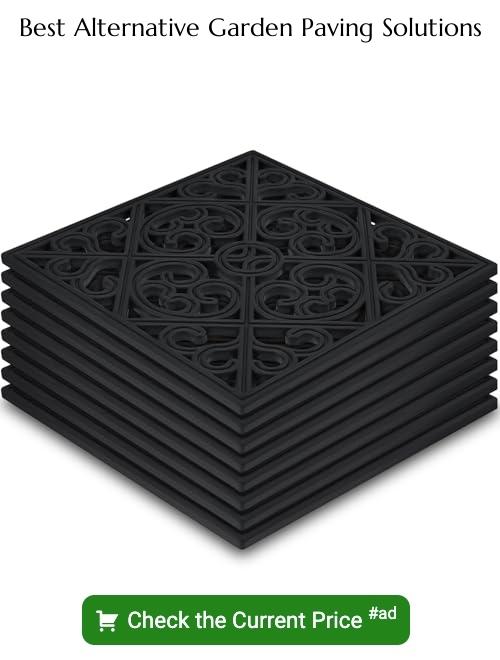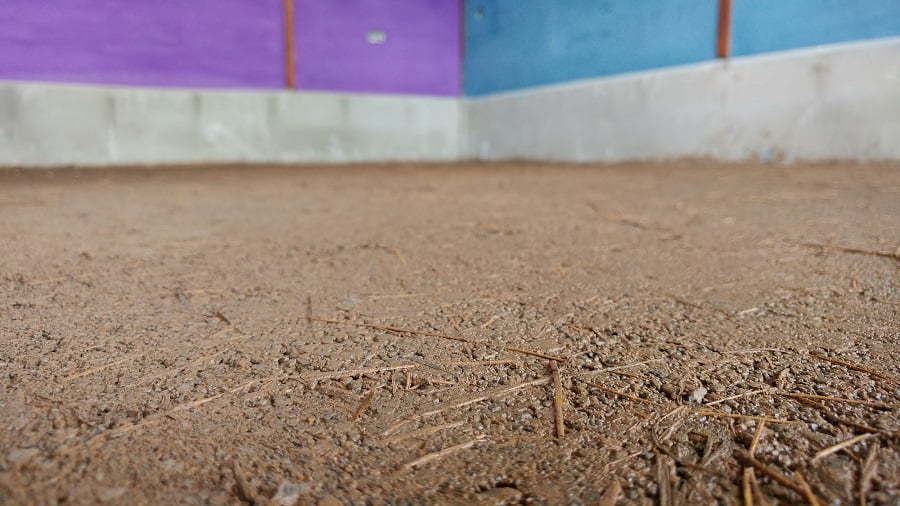Last updated on
Use these 15 alternatives to paving slabs as your options (often cheaper) for your backyard, garden, or patio. Read on!
Paving slabs are expensive but they’re still popular for a reason. They’re durable and easy to maintain. But if you want to save money, then concrete might not be your best bet. Paving costs money. You should be careful about how much you spend.
There are many different types of paving for a backyard, garden, or patio. Some are made out of brick, rubber, green concrete, ferrock, fly ash cement (see cement alternatives), marble, porcelain, travertine, flagstone, PVC, cobblestones, sand, mycelium, hempcrete, gravel, asphalt, resin, timber, etc. It all depends on the use case.
Here are more options and alternatives.
Composite Decking

Plastic-based building products are now being used as an inexpensive alternative to paving slabs, but they still need to be maintained properly. These building products feature a mixture of plastics, fibers, and bonding agents. They’re heated, then shaped into boards, and cooled for use as paving slabs. Their advantage is that they require less maintenance than other materials like stone, cement, and wooden decking. Furthermore, they create a more natural appearance than plastic alternatives.
Plastic is a very useful material for outdoor flooring. It is durable and resistant to insects, dampness, rot, and stains. It seals, paints, and stains are not needed. It does not crack or warp when exposed to direct sunlight, and it is slip-resistant.
Tarmac (Asphalt Concrete)
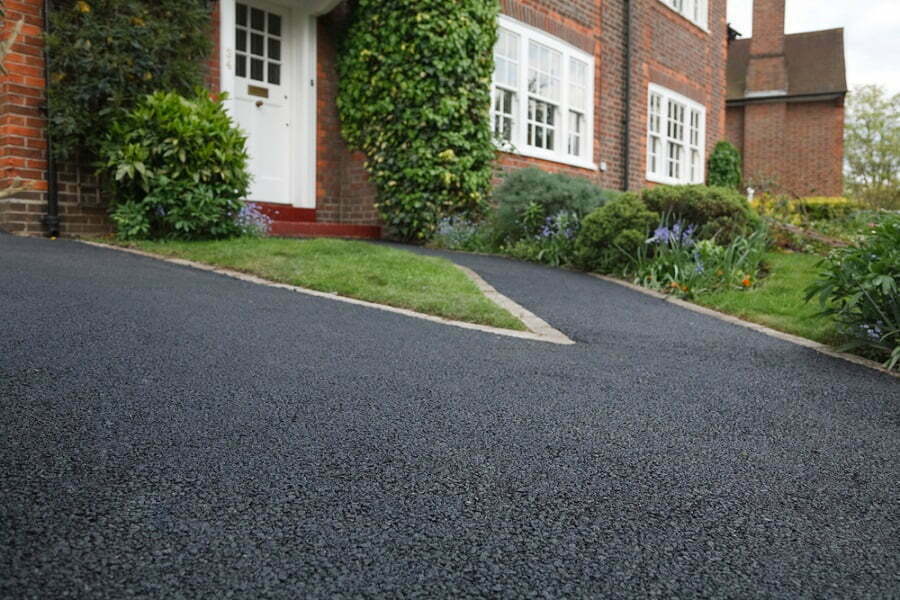
Tarmac, also known as asphalt concrete, is an excellent choice for driveway projects. It’s naturally dark-colored, durable, and can be recycled.
Tarmac is a type of asphalt that is laid down as a single sheet. Unlike patio slabs that feature a number of tiles, tarmac has just a single layer. This means it can be completed in fewer days. Materials needed for tarmac are often cheaper and laying tarmac requires less time. As such, the overall cost is lower than the patio slab. If you’re looking for an alternative that looks simple but doesn’t require much effort, then tarmac may be a perfect choice.
Tarmac planings can make a driveway or parking lot more durable. Tarmac plainings are made by recycling old asphalt concrete. Then, the new asphalt is leveled out and compacted to make a smooth surface. Tarmac plainings can last a long time because they’re made from recycled asphalt.
Poured Concrete
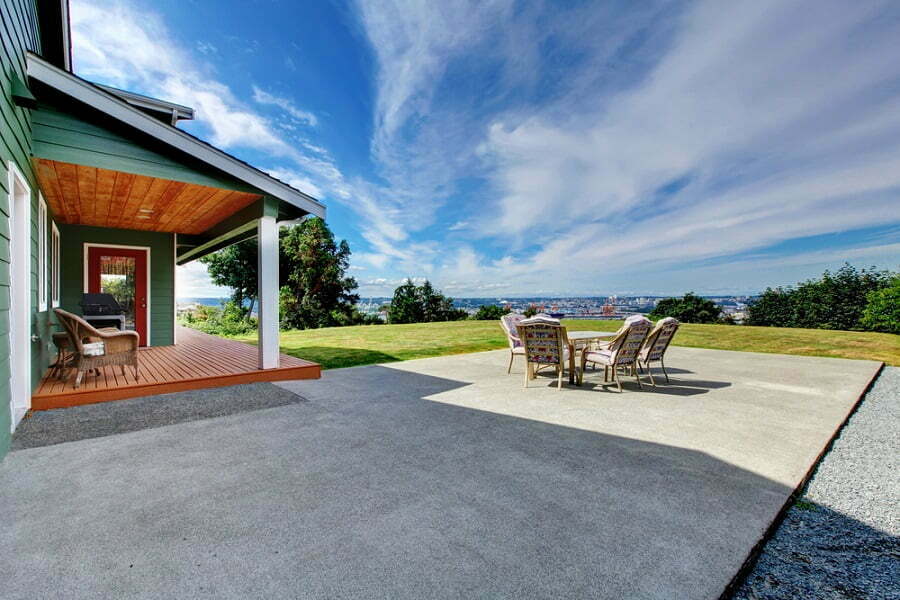
Pouring concrete is a great option for outdoor patios or driveways. It lasts longer than asphalt, provides a smooth surface, and is less expensive than paving. Steel rods reinforce the concrete, making it stronger. Concrete is ideal for outdoor use due to its resistance to weather conditions.
Concrete is poured into a mold and then stamped to make an impression. Pouring concrete is very expensive, so people often use it as a decorative material. However, there are many other options available. You can also get a stamp made to match your design.
Resin Bound Gravel
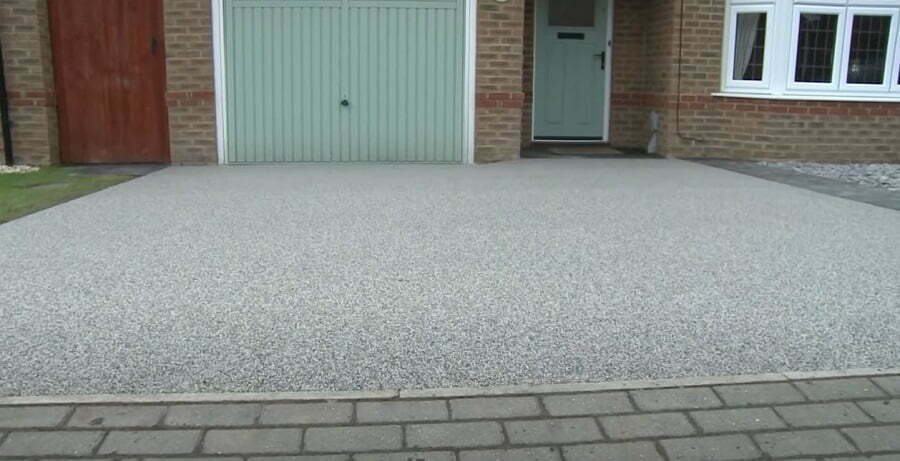
Resin-bound gravel is cheap and easy to use. It is more durable than concrete or brick pavers. It doesn’t need much maintenance and lasts longer than other materials.
Natural Stone
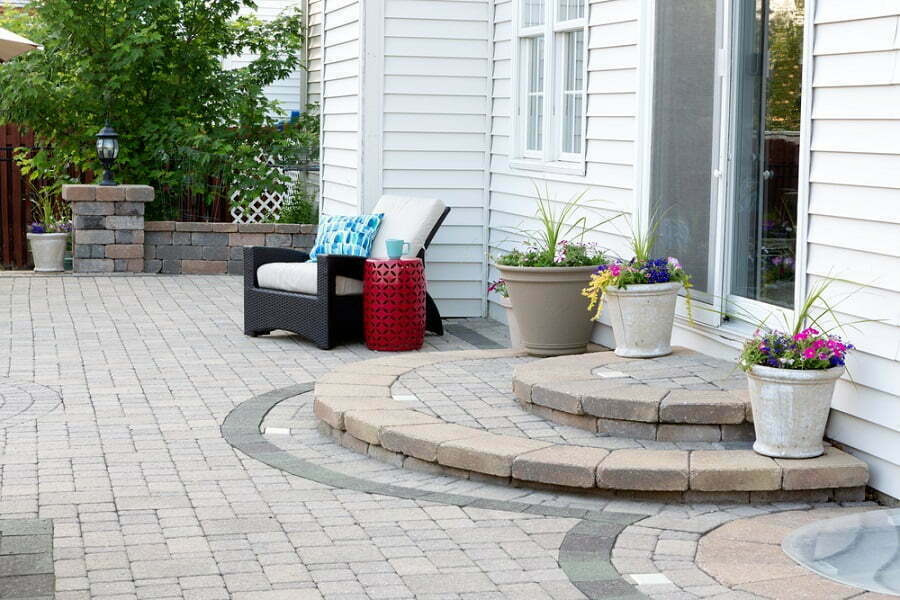
Firstly, let’s start with one of the cheapest options. Natural limestone paving looks magnificent when laid, but it costs less than other materials. Installation is simple and straightforward.
Natural stone, unlike other man-made decking alternatives, such as composite decking, needs to be sited on a solid base and this often requires lots of heavy excavation groundworks.
Pros: Looks great. Retains looks.
Cons: Expensive product. Cut and laid stone surfaces may be uneven. Weeds grow between stones. Stone surfaces may be unsuitable for anyone who is unsteady on their legs.
Artificial Grass
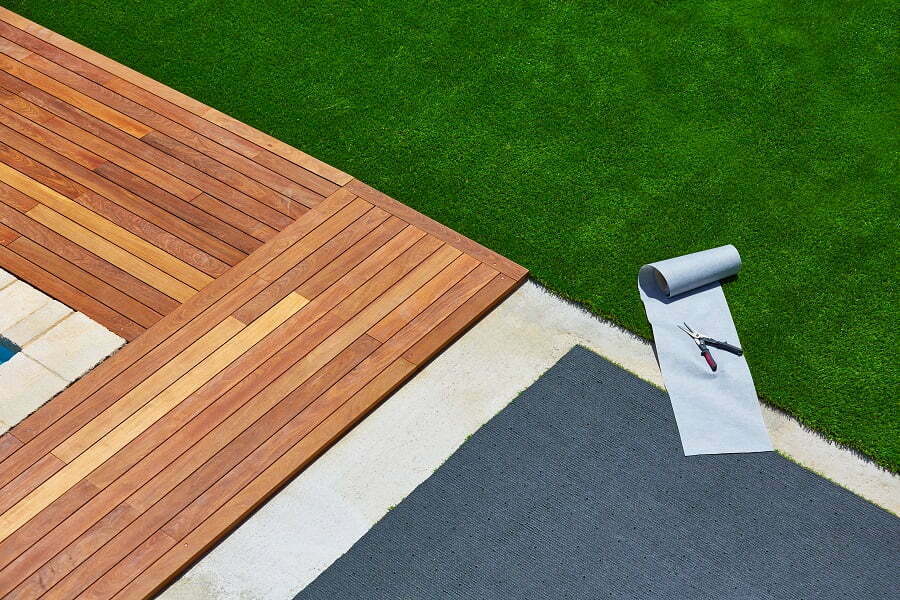
Artificial grass can be very useful for people who want to create a nice-looking outdoor space. The material is easy to install and maintain. It is also durable and long-lasting.
Synthetic turf is an excellent choice for non-grassed areas. It looks great and is easy to maintain. Stepping stones can be added to make the path more interesting.
Bark Chippings
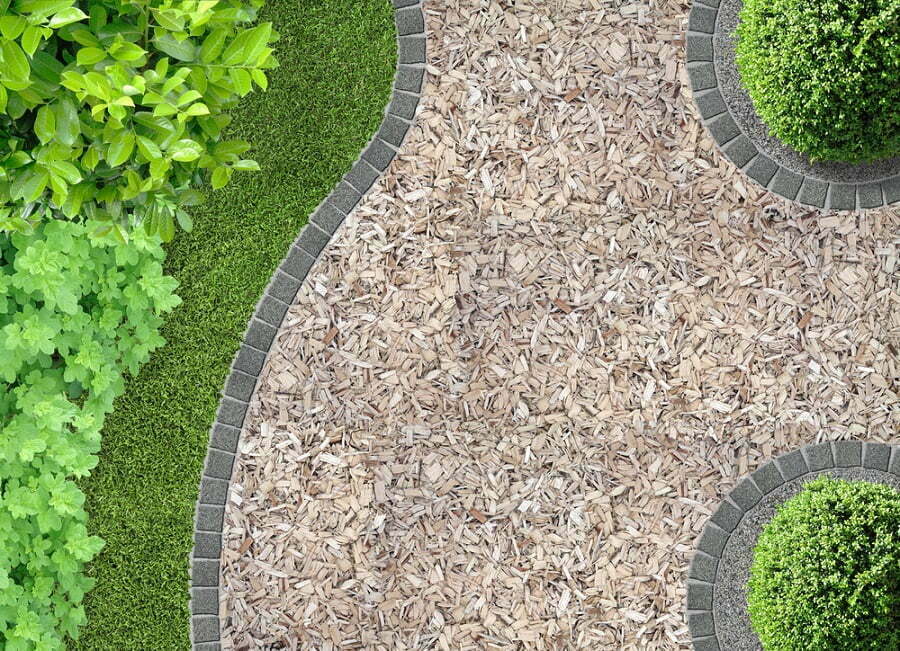
Bark chippings are small pieces of bark that have been removed from trees during tree trimming operations. They can be used in place of concrete pavers for landscaping purposes. Bark chips are usually cheaper than concrete pavers. However, they are not as strong or durable.
Timber Decking
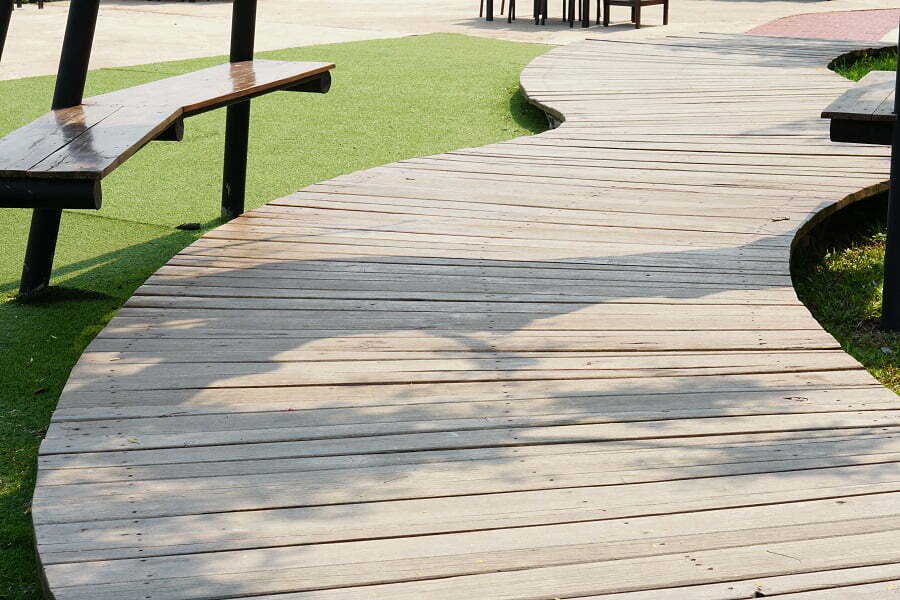
Wooden decking looks great when installed. However, do note that it needs yearly treatment to prevent it from splitting, cracking, fading, and rotting. Pressure-treated wood warps over time. Composite decking is cheaper than timber, but it doesn’t last as long.
Pros: Easy to install. No weed growing between boards.
Cons: Looks that diminish. Insects can get into the wood.
PVC Decking
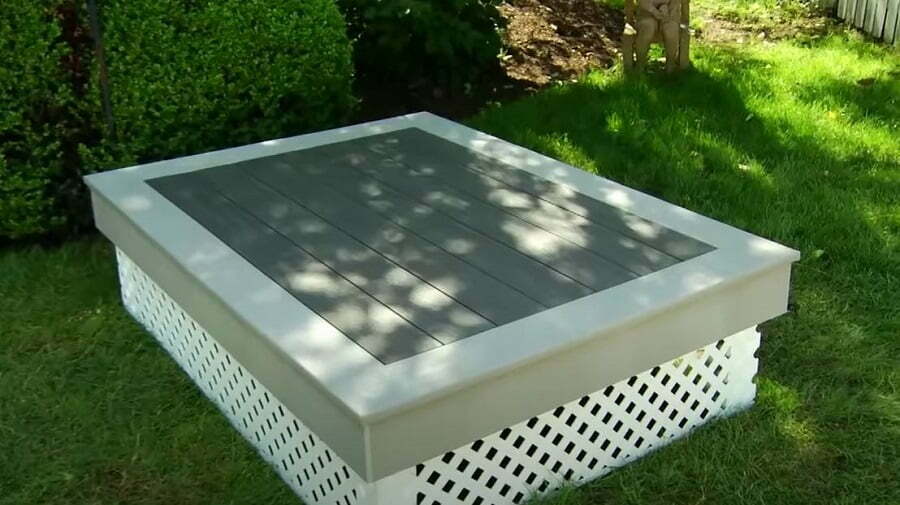
PVC decking is an engineered wood product that can be used in place of traditional wooden decks. It is manufactured using polyvinyl chloride (PVC) plastic resin and fiberglass matting. PVC decking comes in a variety of colors and patterns. It has been designed to look like real wood. The main advantage of PVC decking is that it does not rot and decay.
Mycelium Pavers
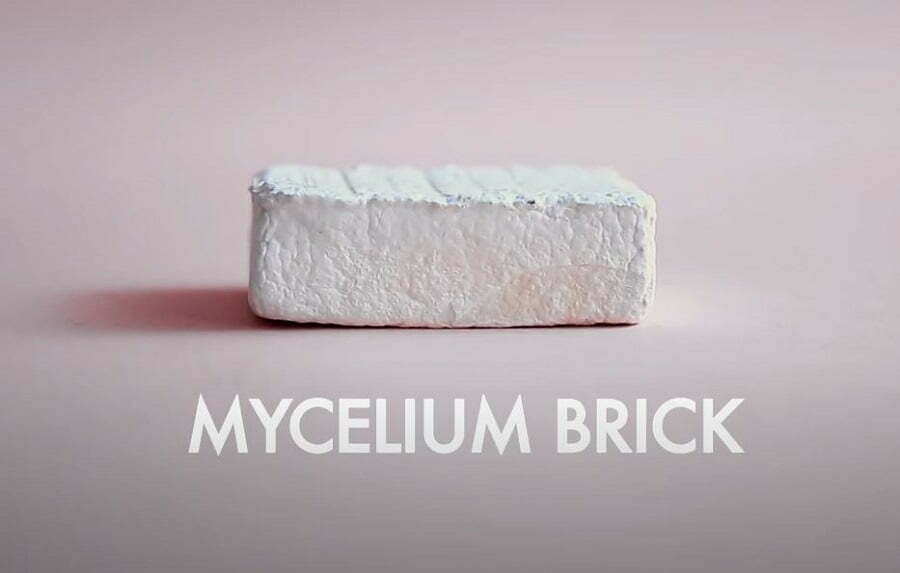
Mycelium is one of the best green alternative materials for building biomass. One of the most interesting aspects of Mycelium paving is that you can grow it on your own. Mushroom pavers are usually called mushroom blocks or mushroom root blocks. They’re relatively easy to grow and can be used for patios, walkways, and outdoor spaces.
Grasscrete Pavers
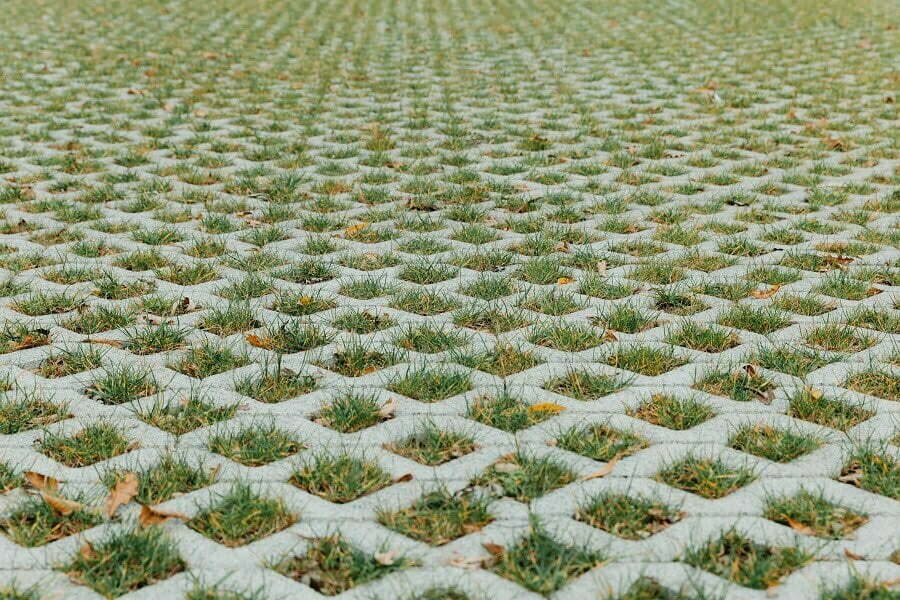
Grasscrete pavers refer to the paving technique that allows greenery to grow. This way less concrete is used and it gets an interesting look (thus grasscrete).
Lawn
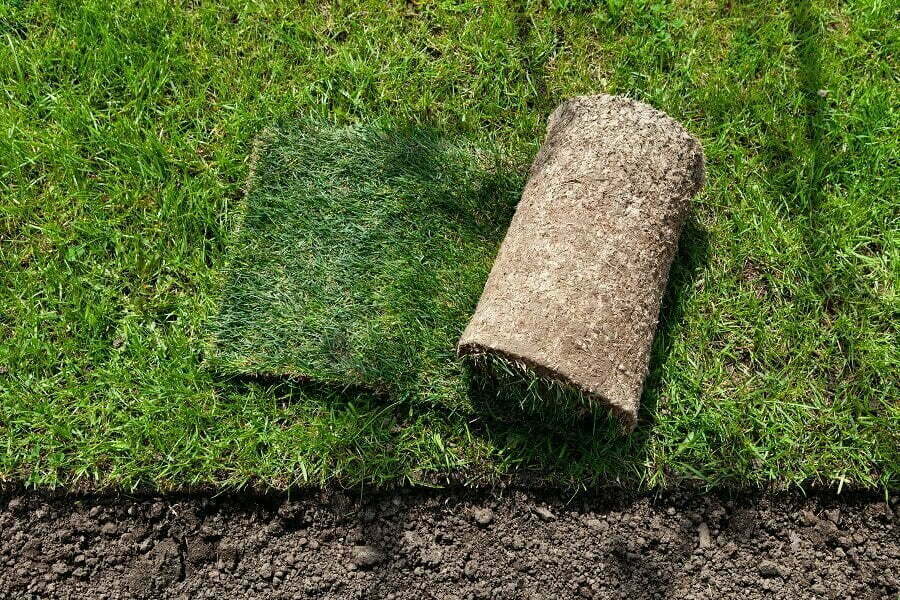
A lawn is an area of grassy ground used for recreation, sports, or leisure activities. Lawns are usually found in parks and recreational areas. The grass is cut regularly so that it stays green all year round. Using rolls of turf is a quick way to add a lawn to your backyard and even patio without having to plant it and wait for it to grow.
Brick Tile
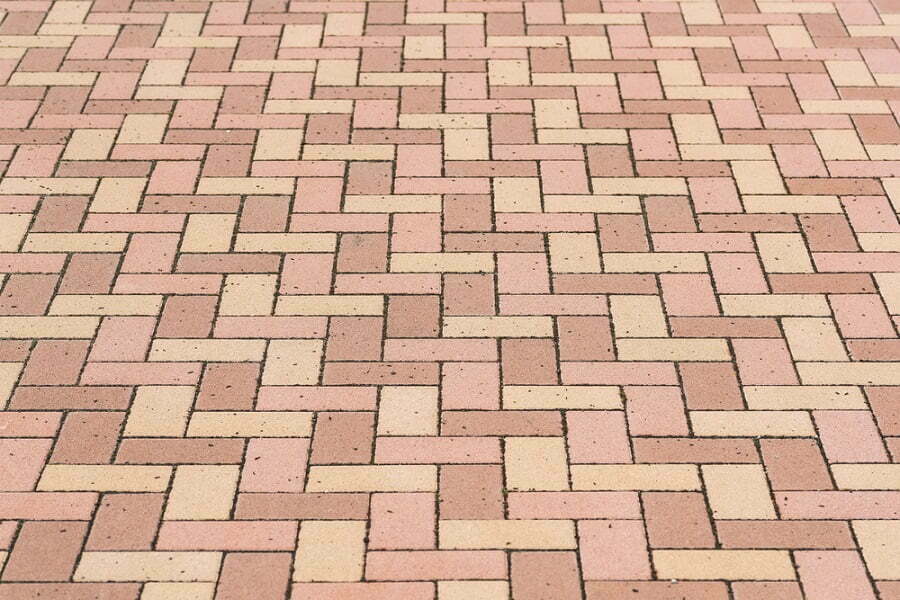
Brick creates a serene Brick and private room. These are perfect for any outdoor space. They add character and style to your home. They are sturdy and durable. They come in various sizes, shapes, and colors.
Ceramic Tile

A unique and stylish way to pave a patio is using wet concrete and mosaic tile. You can use broken glass, broken tiles, and anything else you can think of to create an incredible design that’s certain to catch the eye and impress guests.
tiling is a very popular method of building patios. Because it takes so long to do, it can be quite expensive. However, if you’re willing to put in some work, you can save money by doing it yourself.
Gravel
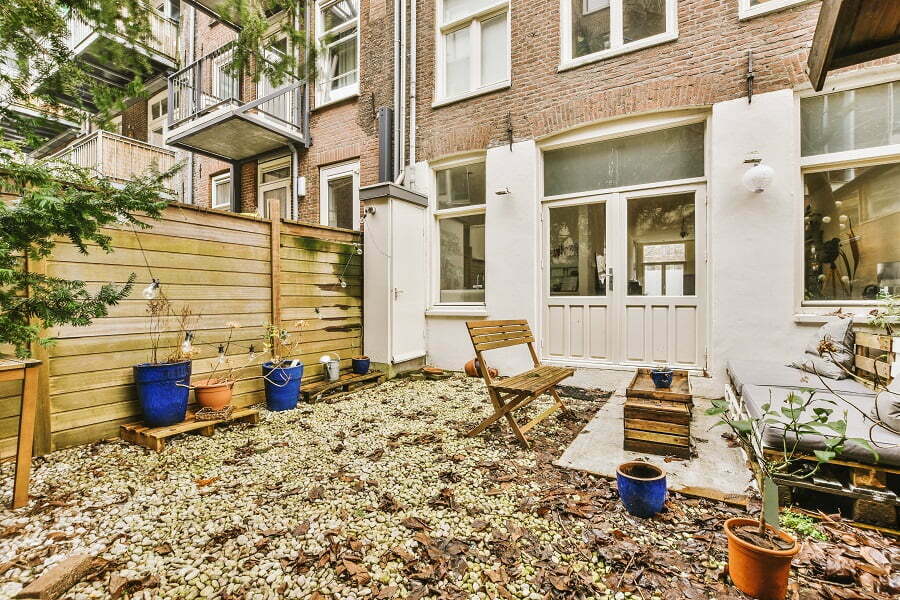
Loose gravel is an inexpensive option for patios. It’s easy to install, and it won’t need much upkeep. You can use borders to keep the gravel in place.
is a type of concrete that absorbs rainwater and prevents mud puddles. Brick driveways are also permeable, allowing water to flow through them.
Gravel is a very attractive dark gray gravel. This is an excellent choice because it is angular and locks into place. When combined with a stabilizing grid paving system it provides a super durable and gorgeous driveway.
FAQ
You can use brick, tile, gravel, and even pavers of different types. All of these materials are affordable and will look good.
It depends on how big your backyard is. If you have enough space, then you should consider installing a pool. If you don’t have enough space, then there are several other options. First, you can build a garden. Next, you can plant trees and shrubs. Finally, you can build a fence around your yard.
The best material for a patio is pavers. Pavers are made from natural stones like granite, limestone, marble, etc. Paving is durable and lasts longer than most other materials.
These days, sustainable pavers made of renewable materials are considered the best pavers for a patio.
Yes, there are several DIY ways to lay a patio. One of the easiest methods is to use pavers or tiles.
Recap
